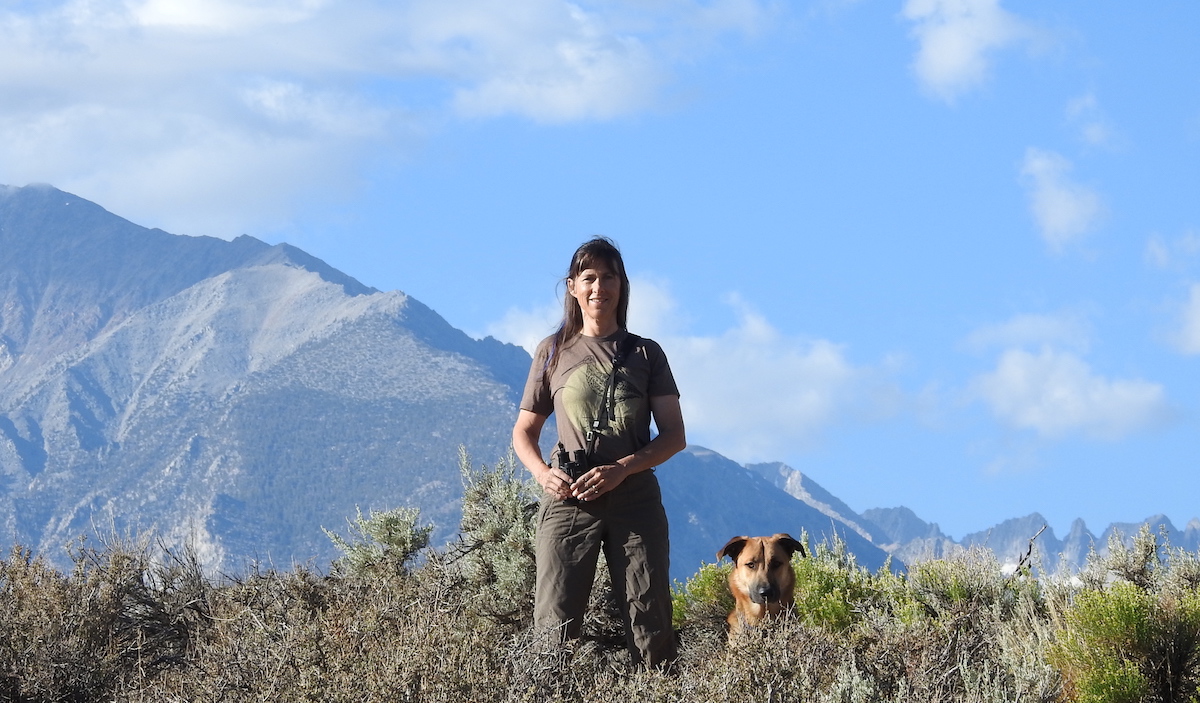
Please join us in congratulating Deborah House of Bishop, California, winner of the August 2017 eBird Challenge, sponsored by Carl Zeiss Sports Optics. Our August winner was drawn from eBirders who submitted 31 or more eligible checklists in August. Deborah’s name was drawn randomly from the 5,498 eligible eBirders who achieved the August challenge threshold. Deborah will receive new ZEISS Conquest HD 8×42 binoculars for her eBirding efforts. Read more to see Deborah’s full story!
Winning the August eBird challenge was an exciting surprise – all I did was to keep doing one of my favorite things: birding in August! There are so many things I like about birding this time of year, especially in the Eastern Sierra: post-breeding dispersal of birds, adult and juvenile shorebirds in varying combinations of molt and plumage to study, brown ducks and more brown ducks, – and then there are those quiet migrants lurking in my neighborhood just after dawn, or just before dusk – providing an endless source of frustration and intrigue. Birds are on the move in August and they provide ample challenges!

Shorebirds are on the move in August, like these American Avocets at Owens Lake in California. Photo by Deborah House/Macaulay Library.
I use eBird primarily as a way to contribute to science by archiving personal data. Fortunately my training in the biological sciences instilled good field note habits, and the eBird interface allows me to easily upload my historical data from the 1990’s forward (a work in progress). I have used eBird sightings both personally and professionally to help evaluate the seasonal and spatial distributions of species, and to fill in information gaps when monitoring or survey data are not available. I use eBird for trip planning, either by reviewing the species richness maps, or for finding sightings of species that inform me about the bird habitat. Mostly, eBird provides a justification for my behavior to my friends and family, and I continue to obsessively record and count all the birds I see, even when I’m not working, as now I have something useful to do with my data. One of my favorite eBird features is the ability to enter breeding code observations. Somebody cares!
Early in my career, I was amazed by a colleague who identified a hummingbird in flight – solely by its call. I then immersed myself in learning bird vocalizations, and to this day I prefer aural birding. After attending Cornell’s Sound Recording Workshop, I now find recording quite addictive, and especially enjoy recording unusual or less-frequently heard bird vocalizations. I am currently working on an informal “sage sparrow” project where I live, which is a zone of contact between the Sagebrush Sparrow (Artemisiospiza nevadensis) and Bell’s Sparrow (A. belli canescens). Thankfully, eBird has made the process of archiving recordings easy. In my retirement, I look forward to filling in local data gaps and exploring ways to make my contributions more supportive of conservation objectives in the Eastern Sierra.

Many shorebirds in the Eastern Sierra enjoy feeding on brine flies at this time of year, like this Baird’s Sandpiper. Photo by Deborah House/Macaulay Library.
The developers of eBird have created a very user-friendly tool that is supporting increased knowledge among a wide variety of user groups regarding the status and distribution of birds on a remarkable scale. While not always a replacement for traditional protocol-based monitoring projects, the scope and breadth of data that eBirders contribute is of tremendous value for science and conservation. So if anyone gives you a hard time about going birding – tell them that you need to go take data!
Thank you for the opportunity to be eBirder of the Month and for the new pair of Zeiss binoculars!
